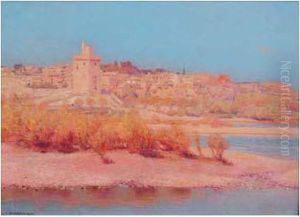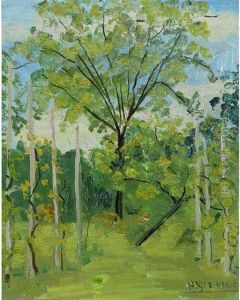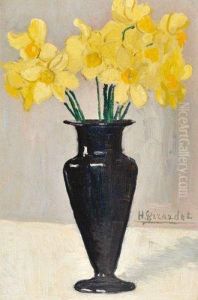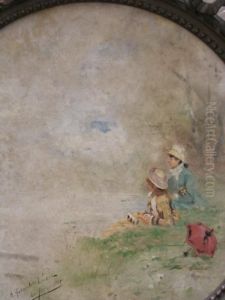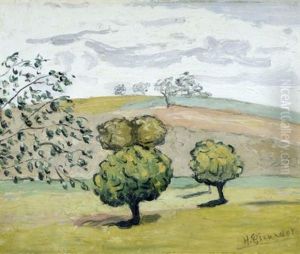Henri Girardot Paintings
Henri Girardot was a French artist born in 1856 in France. Not as widely recognized as some of his contemporaries, Girardot nevertheless made significant contributions to the art world of his time, particularly in the realms of painting and illustration. His work was part of the broader movements of his era, incorporating elements of realism and impressionism, which were dominant in the late 19th and early 20th centuries. Girardot's oeuvre includes landscapes, portraits, and genre scenes, showcasing his versatility and keen observation of the world around him.
Girardot's artistic journey was marked by his exploration of light and color, which he manipulated to capture the fleeting moments of everyday life. His landscapes, often inspired by the French countryside, are noted for their vibrant colors and dynamic compositions, reflecting the changing atmospheres of the seasons. In his portraits, Girardot demonstrated a profound understanding of human character, capturing the essence of his subjects with sensitivity and depth. Despite his talent, Henri Girardot did not achieve the same level of fame as some of his peers, such as Claude Monet or Auguste Renoir, but his work was appreciated by those who knew it for its emotional depth and technical precision.
Throughout his career, Girardot participated in various exhibitions, though the records of his specific participation and accolades are less documented than those of more famous artists. His works were part of the artistic movements that sought to capture the beauty of the natural world and the complexities of human experience through a more spontaneous and personal approach to painting. Henri Girardot passed away in 1933, leaving behind a body of work that, while not widely known today, remains an important testament to the artistic movements of his time and his own unique vision within the broader context of French art history.
